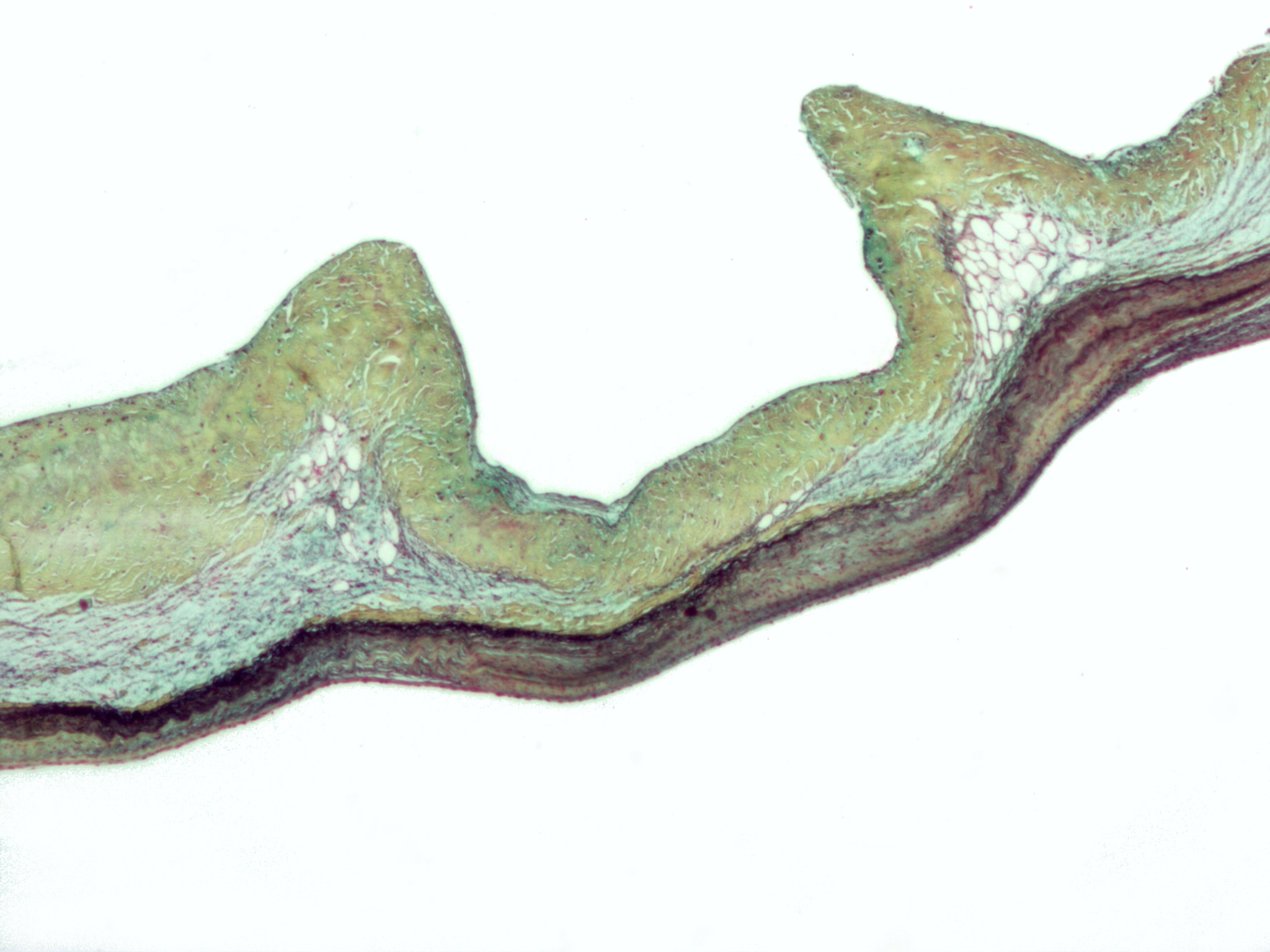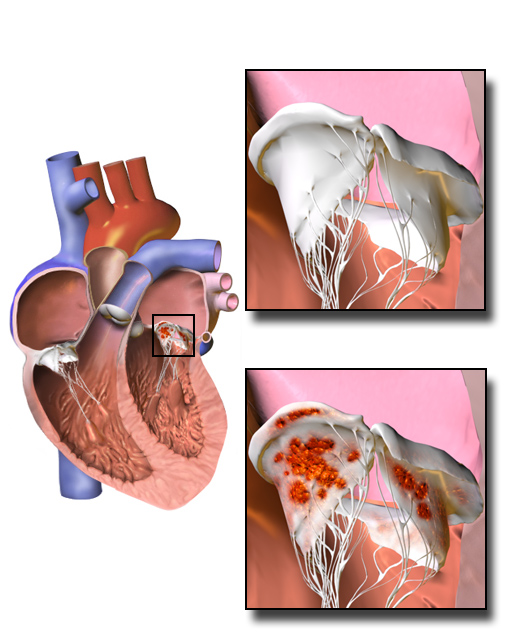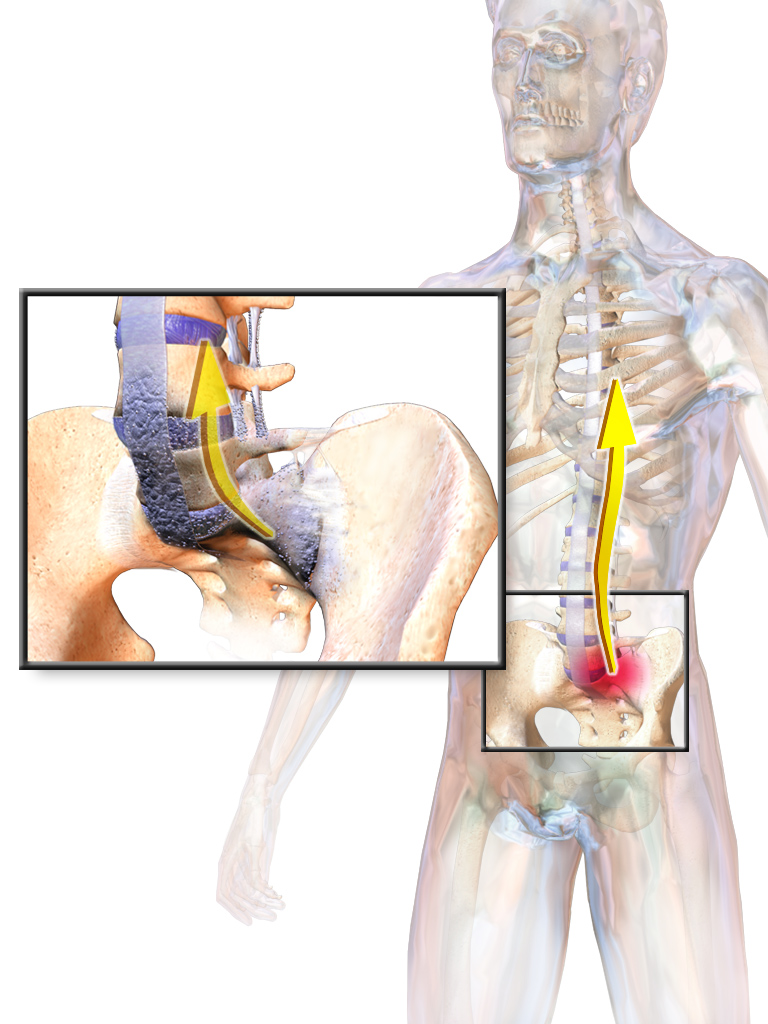|
Aortic Insufficiency
Aortic regurgitation (AR), also known as aortic insufficiency (AI), is the leaking of the aortic valve of the heart that causes blood to flow in the reverse direction during ventricular diastole, from the aorta into the left ventricle. As a consequence, the cardiac muscle is forced to work harder than normal. Signs and symptoms Symptoms of aortic regurgitation are similar to those of heart failure and include the following: * Dyspnea on exertion * Orthopnea * Paroxysmal nocturnal dyspnea * Palpitations * Angina pectoris * Cyanosis (in acute cases) Causes In terms of the cause of aortic regurgitation, is often due to the aortic root dilation ('' annuloaortic ectasia''), which is idiopathic in over 80% of cases, but otherwise may result from aging, syphilitic aortitis, osteogenesis imperfecta, aortic dissection, Behçet's disease, reactive arthritis and systemic hypertension.Chapter 1: Diseases of the Cardiovascular system > Section: Valvular Heart Disease in: Aortic root d ... [...More Info...] [...Related Items...] OR: [Wikipedia] [Google] [Baidu] |
Aortic Valve Replacement
Aortic valve replacement is a cardiac surgery procedure whereby a failing aortic valve is replaced with an artificial heart valve. The aortic valve may need to be replaced because of aortic regurgitation (back flow), or if the valve is narrowed by stenosis. Current methods for aortic valve replacement include open-heart surgery, ''minimally invasive cardiac surgery (MICS)'', ''surgical aortic valve replacement'' (SAVR), percutaneous or transcatheter aortic valve replacement (TAVR; also PAVR, PAVI, TAVI), and robotic aortic valve replacement (RAVR). A cardiologist can evaluate whether a heart valve repair or valve replacement would be of benefit. History During the late 1940s and early 1950s, the first surgical approaches towards treating aortic valve stenosis had limited success. The first attempts were valvotomies, (i.e. cutting the valve while the heart is pumping). A ball valve prosthesis placed on the descending thoracic aorta (heterotopically) was developed by ... [...More Info...] [...Related Items...] OR: [Wikipedia] [Google] [Baidu] |
Syphilitic Aortitis
Syphilitic aortitis is inflammation of the aorta associated with the tertiary stage of syphilis infection. SA begins as inflammation of the outermost layer of the blood vessel, including the blood vessels that supply the aorta itself with blood, the vasa vasorum. As SA worsens, the vasa vasorum undergo hyperplastic thickening of their walls thereby restricting blood flow and causing ischemia of the outer two-thirds of the aortic wall. Starved for oxygen and nutrients, elastic fibers become patchy and smooth muscle cells die. If the disease progresses, syphilitic aortitis leads to an aortic aneurysm. Overall, tertiary syphilis is a rare cause of aortic aneurysms. Syphilitic aortitis has become rare in the developed world with the advent of penicillin treatments after World War II. Signs and symptoms The infection often has no symptoms until the patient develops an aneurysm because of the aortic dilatation. The disease is often discovered after a routine checkup of the heart and ... [...More Info...] [...Related Items...] OR: [Wikipedia] [Google] [Baidu] |
Infective Endocarditis
Infective endocarditis is an infection of the inner surface of the heart (endocardium), usually the heart valve, valves. Signs and symptoms may include fever, petechia, small areas of bleeding into the skin, heart murmur, feeling tired, and anemia, low red blood cell count. Complications may include valvular insufficiency, backward blood flow in the heart, heart failure – the heart struggling to pump a sufficient amount of blood to meet the body's needs, Heart block, abnormal electrical conduction in the heart, stroke, and kidney failure. The cause is typically a bacterial infection and less commonly a fungal infection. Risk factors include valvular heart disease, including rheumatic heart disease, rheumatic disease, congenital heart disease, artificial valves, hemodialysis, intravenous drug use, and electronic pacemakers. The bacteria most commonly involved are streptococci or staphylococci. Diagnosis is suspected based on symptoms and supported by blood cultures or Echocardi ... [...More Info...] [...Related Items...] OR: [Wikipedia] [Google] [Baidu] |
Systemic Lupus Erythematosus
Lupus, formally called systemic lupus erythematosus (SLE), is an autoimmune disease in which the body's immune system mistakenly attacks healthy tissue in many parts of the body. Symptoms vary among people and may be mild to severe. Common symptoms include painful and swollen joints, fever, chest pain, hair loss, mouth ulcers, swollen lymph nodes, feeling tired, and a red rash which is most commonly on the face. Often there are periods of illness, called flares, and periods of remission during which there are few symptoms. Children up to 18 years old develop a more severe form of SLE termed childhood-onset systemic lupus erythematosus. The cause of SLE is not clear. It is thought to involve a combination of genetics and environmental factors. Among identical twins, if one is affected there is a 24% chance the other one will also develop the disease. Female sex hormones, sunlight, smoking, vitamin D deficiency, and certain infections are also believed to increa ... [...More Info...] [...Related Items...] OR: [Wikipedia] [Google] [Baidu] |
Ankylosing Spondylitis
Ankylosing spondylitis (AS) is a type of arthritis from the disease spectrum of axial spondyloarthritis. It is characterized by long-term inflammation of the joints of the spine, typically where the spine joins the pelvis. With AS, eye and bowel problems—as well as back pain—may occur. Joint mobility in the affected areas sometimes worsens over time. Ankylosing spondylitis is believed to involve a combination of genetic and environmental factors. More than 90% of people affected in the UK have a specific human leukocyte antigen known as the HLA-B27 antigen. The underlying mechanism is believed to be autoimmune or autoinflammatory. Diagnosis is based on symptoms with support from medical imaging and blood tests. AS is a type of seronegative spondyloarthropathy, meaning that tests show no presence of rheumatoid factor (RF) antibodies. There is no cure for AS. Treatments may include medication, physical therapy, and surgery. Medication therapy focuses on relieving the pai ... [...More Info...] [...Related Items...] OR: [Wikipedia] [Google] [Baidu] |
Ehlers–Danlos Syndrome
Ehlers–Danlos syndromes (EDS) is a group of 14 genetic connective-tissue disorders. Symptoms often include loose joints, joint pain, stretchy velvety skin, and abnormal scar formation. These may be noticed at birth or in early childhood. Complications may include aortic dissection, joint dislocations, scoliosis, chronic pain, or early osteoarthritis. The existing classification was last updated in 2017, when a number of rarer forms of EDS were added. EDS occurs due to mutations in one or more particular genes—there are 19 genes that can contribute to the condition. The specific gene affected determines the type of EDS, though the genetic causes of hypermobile Ehlers–Danlos syndrome are still unknown. Some cases result from a new variation occurring during early development, while others are inherited in an autosomal dominant or recessive manner. Typically, these variations result in defects in the structure or processing of the protein collagen or tenascin. Diagnos ... [...More Info...] [...Related Items...] OR: [Wikipedia] [Google] [Baidu] |
Marfan Syndrome
Marfan syndrome (MFS) is a multi-systemic genetic disorder that affects the connective tissue. Those with the condition tend to be tall and thin, with dolichostenomelia, long arms, legs, Arachnodactyly, fingers, and toes. They also typically have hypermobility (joints), exceptionally flexible joints and scoliosis, abnormally curved spines. The most serious complications involve the heart and aorta, with an increased risk of mitral valve prolapse and aortic aneurysm. The lungs, eyes, bones, and the dura mater, covering of the spinal cord are also commonly affected. The severity of the symptoms is variable. MFS is caused by a mutation in ''FBN1'', one of the genes that make fibrillin, which results in abnormal connective tissue. It is an autosomal dominant disorder. In about 75% of cases, it is inherited from a parent with the condition, while in about 25% it is a new mutation. Diagnosis is often based on the Ghent criteria, family history and genetic testing (DNA analysis). Th ... [...More Info...] [...Related Items...] OR: [Wikipedia] [Google] [Baidu] |
Dopamine Agonists
A dopamine agonist is a compound that activates dopamine receptors. There are two families of dopamine receptors, D1-like and D2-like. They are all G protein-coupled receptors. D1- and D5-receptors belong to the D1-like family and the D2-like family includes D2, D3 and D4 receptors. Dopamine agonists are primarily used in the treatment of the motor symptoms of Parkinson's disease, and to a lesser extent, in hyperprolactinemia and restless legs syndrome. They are also used off-label in the treatment of clinical depression. Impulse control disorders are associated with the use of dopamine agonists. Medical uses Parkinson's disease Dopamine agonists are mainly used in the treatment of Parkinson's disease. The cause of Parkinson's is not fully known but genetic factors, for example specific genetic mutations, and environmental triggers have been linked to the disease. In Parkinson's disease dopaminergic neurons that produce the neurotransmitter dopamine in the brain slowly br ... [...More Info...] [...Related Items...] OR: [Wikipedia] [Google] [Baidu] |
Dexfenfluramine
Dexfenfluramine, formerly sold under the brand name Redux, is a Serotonin, serotonergic drug that was used as an appetite suppressant to promote weight loss. It is the d-enantiomer of fenfluramine and is structurally similar to amphetamine, but lacks any psychologically stimulating effects. Dexfenfluramine was, for some years in the mid-1990s, approved by the United States Food and Drug Administration (FDA) for the purposes of weight loss. However, following multiple concerns about its cardiovascular side effects, the FDA withdrew the approval in 1997. After it was removed in the US, dexfenfluramine was also pulled out in other global markets. It was later superseded by sibutramine, which, although initially considered a safer alternative to both dexfenfluramine and fenfluramine, was likewise removed from the US market in 2010. The drug was developed by Interneuron Pharmaceuticals, a company co-founded by Richard Wurtman, aimed at marketing discoveries by Massachusetts Institut ... [...More Info...] [...Related Items...] OR: [Wikipedia] [Google] [Baidu] |
Fenfluramine
Fenfluramine, sold under the brand name Fintepla, is a serotonergic medication used for the treatment of seizures associated with Dravet syndrome and Lennox–Gastaut syndrome. It was formerly used as an appetite suppressant in the treatment of obesity, but was discontinued for this use due to cardiovascular toxicity before being repurposed for new indications. Fenfluramine was used for weight loss both alone under the brand name Pondimin and in combination with phentermine commonly known as fen-phen. Side effects of fenfluramine in people treated for seizures include decreased appetite, somnolence, sedation, lethargy, diarrhea, constipation, abnormal echocardiogram, fatigue, malaise, asthenia, ataxia, balance disorder, gait disturbance, increased blood pressure, drooling, excessive salivation, fever, upper respiratory tract infection, vomiting, appetite loss, weight loss, falls, and status epilepticus. Fenfluramine acts as a serotonin and norepinephrin ... [...More Info...] [...Related Items...] OR: [Wikipedia] [Google] [Baidu] |
Hypertension
Hypertension, also known as high blood pressure, is a Chronic condition, long-term Disease, medical condition in which the blood pressure in the artery, arteries is persistently elevated. High blood pressure usually does not cause symptoms itself. It is, however, a major risk factor for stroke, coronary artery disease, heart failure, atrial fibrillation, peripheral arterial disease, vision loss, chronic kidney disease, and dementia. Hypertension is a major cause of premature death worldwide. High blood pressure is classified as essential hypertension, primary (essential) hypertension or secondary hypertension. About 90–95% of cases are primary, defined as high blood pressure due to non-specific lifestyle and Genetics, genetic factors. Lifestyle factors that increase the risk include excess salt in the diet, overweight, excess body weight, smoking, physical inactivity and Alcohol (drug), alcohol use. The remaining 5–10% of cases are categorized as secondary hypertension, d ... [...More Info...] [...Related Items...] OR: [Wikipedia] [Google] [Baidu] |
Reactive Arthritis
Reactive arthritis, previously known as Reiter's syndrome, is a form of inflammatory arthritis that develops in response to an infection in another part of the body (cross-reactivity). Coming into contact with bacteria and developing an infection can trigger the disease. By the time a person presents with symptoms, the "trigger" infection has often been cured or is in remission in chronic cases, thus making determination of the initial cause difficult. The manifestations of reactive arthritis include the following triad of symptoms: inflammatory arthritis of large joints, inflammation of the eyes in the form of conjunctivitis or uveitis, and urethritis in men or cervicitis in women. Arthritis occurring alone following sexual exposure or enteric infection is also known as reactive arthritis. Affected people may present with mucocutaneous lesions, as well as psoriasis-like skin lesions such as circinate balanitis, and keratoderma blennorrhagicum. Enthesitis can involve the ... [...More Info...] [...Related Items...] OR: [Wikipedia] [Google] [Baidu] |







